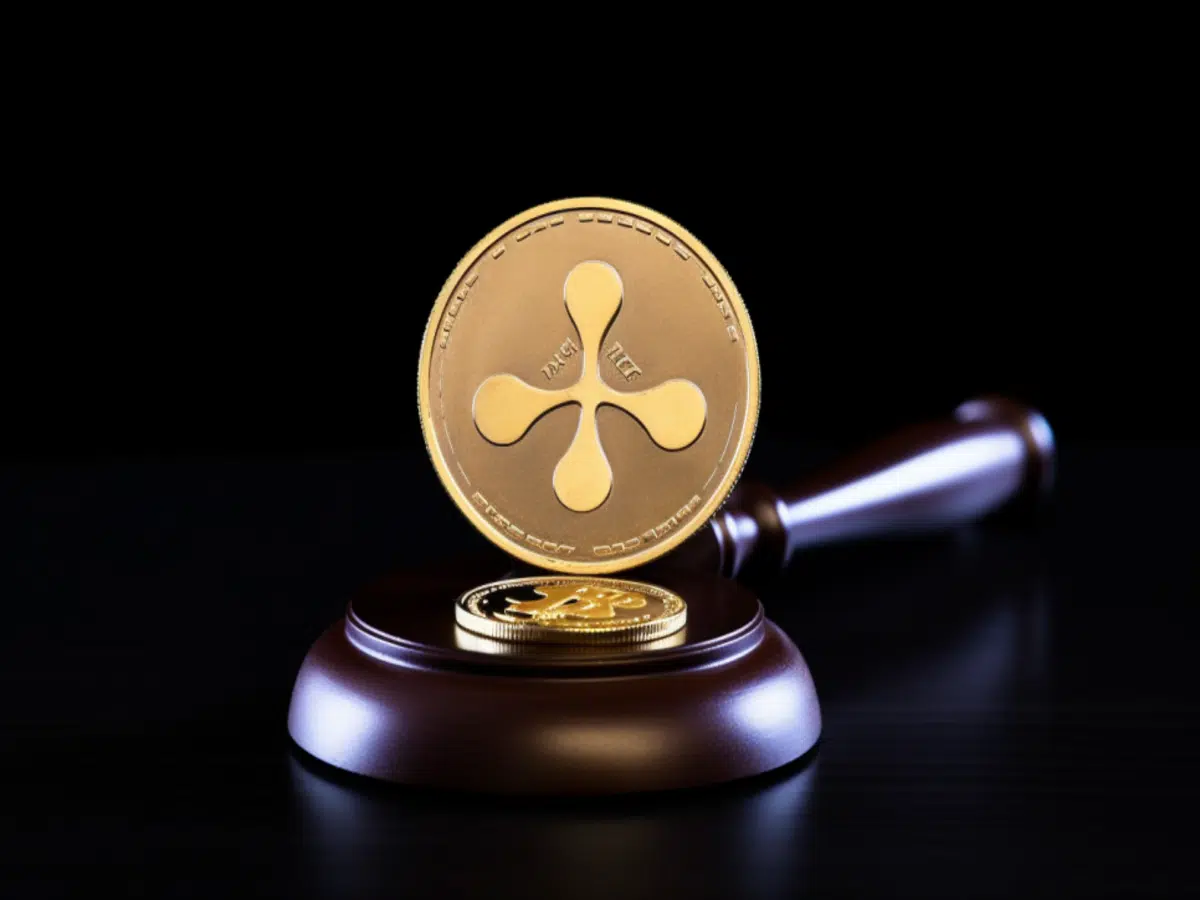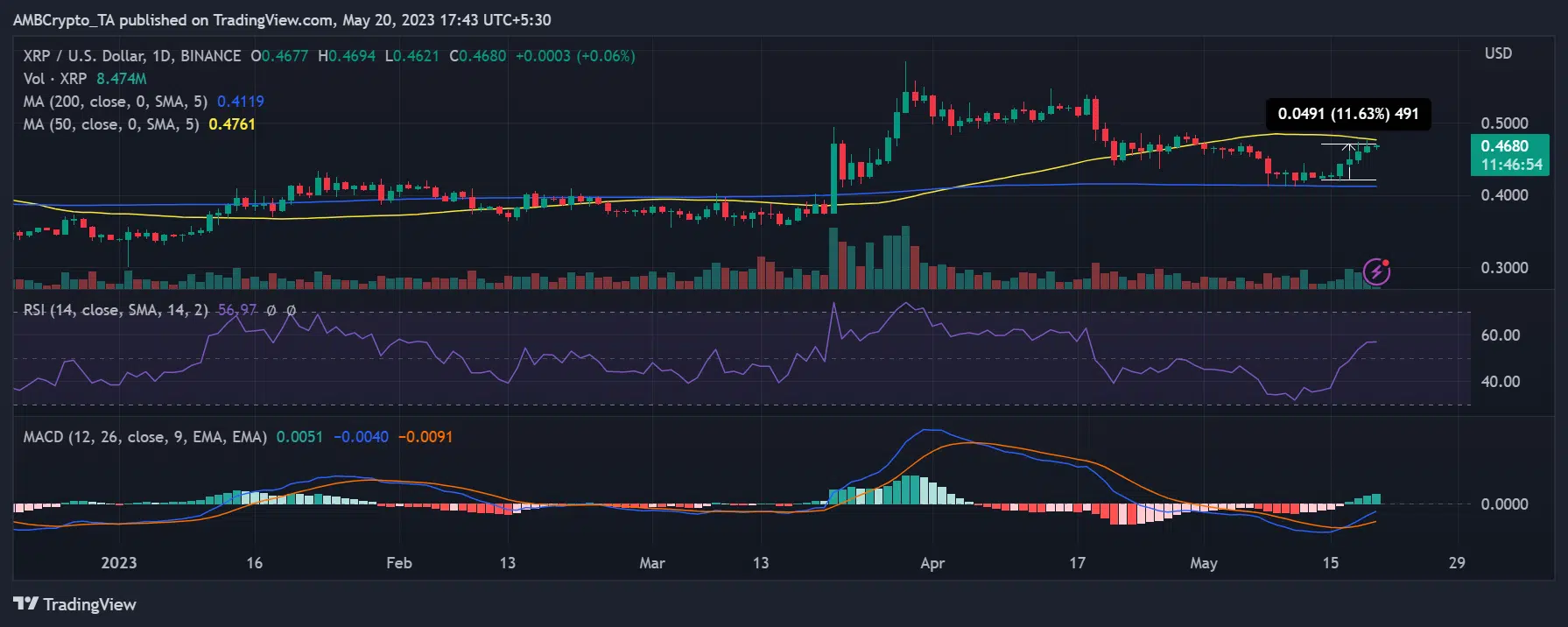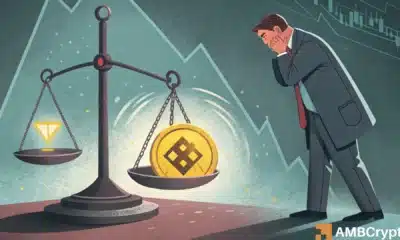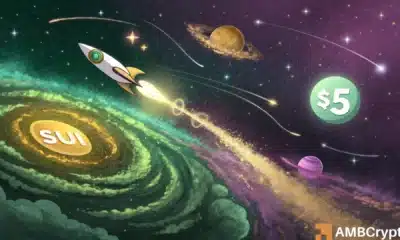As XRP SEC case nears conclusion, what will be its effects on the industry?

- The Hinman document becomes key evidence in the XRP SEC battle.
- XRP shows positive sentiment and an upward trend amid ongoing legal proceedings.
The Hinman documents have been a contentious topic in the Ripple [XRP] SEC battle. The SEC and Ripple have engaged in a heated debate over its significance. The SEC tried to block its acceptance as evidence through various motions, but the judge ultimately denied their request. Recently, the judge classified the Hinman document as one of the “judicial documents” in the case.
Read Ripple’s [XRP] Price Prediction 2022-24
Hinman documents not to be redacted in the XRP SEC case
The ongoing legal battle between XRP and the SEC has been marked by a contentious document known as the Hinman document. Both sides fiercely debated its significance and argued for and against its inclusion. However, the judge ultimately ruled that it should be admitted as evidence.
In a recent judgment by Judge Analisa Torres on 16 May, the Hinman document was classified as a judicial document. This means that contrary to the SEC’s wishes, the document’s contents will be made available to the public. Additionally, as both parties geared up for the summary judgment, various motions were granted and denied.
The significance of the Hinman docs in the XRP SEC case
The Hinman documents are a collection of internal communications within the SEC involving William Hinman. He was the former director of the Division of Corporation Finance of the SEC.
In 2018, Hinman delivered a speech where he stated that Ethereum [ETH], a different cryptocurrency, did not fall under the classification of security. This speech prompted questions regarding the SEC’s position on other cryptocurrencies, including XRP. The Hinman documents contain internal discussions and analyses regarding categorizing cryptocurrencies as securities, potentially shedding light on the SEC’s perspective on XRP.
Ripple Labs actively sought access to these documents to support its defense in the SEC case. Ripple argued that the documents might reveal inconsistencies and selective enforcement by the SEC, which could significantly impact the case’s outcome.
SEC asks for a week’s extension to file unredacted documents
Following the 16 May judgment, which required SEC and Ripple to release unredacted versions of certain documents, an extension request was submitted. According to a court document shared by James Filan on May 19, both parties requested an additional week, until 13 June, 2023, to submit public, unredacted versions of cross-motions for summary judgment and related exhibits, including the Hinman materials.
This extension request demonstrated the willingness of both parties to comply with the 16 May ruling, enabling the public to access a selection of documents relevant to the case.
A summary of the XRP SEC tussle
In 2020, the SEC accused Ripple, the creator of the XRP cryptocurrency, of conducting an unregistered securities offering by selling over $1 billion worth of XRP to investors in 2013. The SEC charged Ripple, as well as its executives Brad Garlinghouse and Christian Larsen, with selling unregulated securities through XRP, totaling over $1.3 billion over several years.
The SEC’s filing included transactions spanning from 2013 to late 2020, involving the sale of over 14.6 billion XRP tokens for cash. In its defense, Ripple referenced statements former SEC director Hinman made to argue that XRP should not be classified as a security.
Some big moves from Ripple
Despite the ongoing legal proceedings with the SEC, Ripple has recently launched a central bank digital currency (CBDC) platform. This platform enables central banks, governments, and financial institutions to create and manage digital currencies.
Through Ripple’s platform, government institutions can customize and oversee the entire life cycle of their CBDCs, including minting, distribution, redemption, and token burning. Financial institutions can also participate in inter-institutional settlement and distribution activities using the CBDC. Notably, the platform supports wholesale and retail CBDCs, allowing for offline transactions.
The platform is an upgraded version of Ripple’s Private Ledger, initially established in 2021 for CBDC issuance. It operates on the XRP Ledger but is built on a separate private ledger. According to Antony Welfare, Ripple’s CBDC strategic advisor, four countries have already expressed interest in utilizing the platform.
CBDC team making significant progress with the launch of the new #cbdc platform 👌 Four countries now announced 👍👍 Grateful to the team at @Ripple who are developing the best platform for the future of Digital Currencies 👌 Palau 🇵🇼 Bhutan 🇧🇹 Montenegro 🇲🇪 Hong Kong 🇭🇰…
— Antony Welfare (@AntonyWelfare) May 19, 2023
XRP’s reaction to the latest developments
Since the 16 May development, Ripple (XRP) has experienced an upward trend in its price, despite the SEC still lurking. According to the price range tool, there has been an increase of over 11% in the value of XRP since the uptrend began.
However, at the time of writing, the excitement surrounding the asset waned slightly. XRP was trading at approximately $0.46, reflecting a minor addition in value of less than 1%. Nevertheless, the overall trend remained bullish.
How much are 1,10,100 XRPs worth today?
Analyzing the Relative Strength Indicator (RSI), the RSI line was above 55, indicating a strong bullish trend. However, XRP has struggled to surpass the short Moving Average (yellow line) around the $0.47 price range.
Furthermore, XRP investors have displayed positive sentiments towards the asset, as reflected by its funding rate metric on Coinglass. At the time of writing, XRP exhibited a positive funding rate. This suggests that there is an anticipation of a future price increase.







